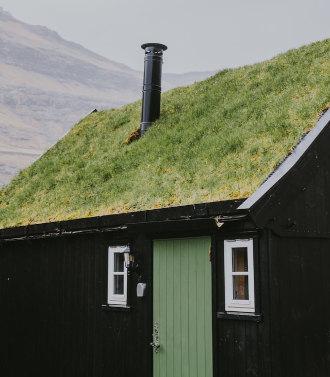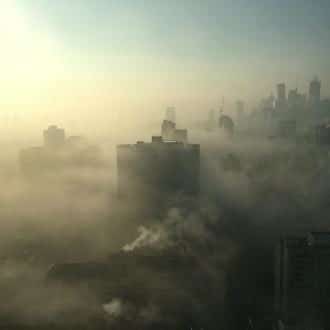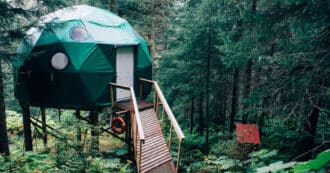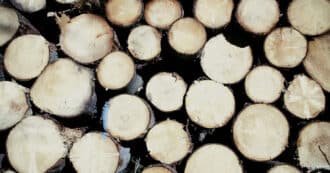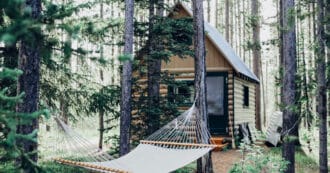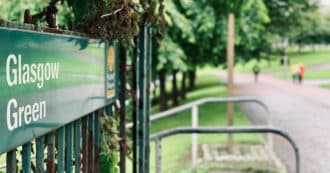By Harry Cooper – As more and more urban spaces develop around the world, environmentalists are becoming concerned about how this is impacting the environment. Urban spaces destroy green spaces that can store carbon and produce lots of greenhouse gases and air pollution.
The Miracle of Green Roofs
Fortunately, there is a simple modern solution that lets both humans and nature live in urban spaces in harmony. This solution is the advent of living roofs, or green roofs.
Green roofs involve converting the tops of buildings into miniature gardens and green spaces by planting on top of them. These living roofs have started popping up in cities all over the world and have numerous benefits for the environment and the buildings themselves.
What is a Living Roof?
Green roofs can come in all shapes and sizes; some entail elaborate gardens filled with multiple different kinds of plants while some contain one or two types of smaller plant species. While there are many different definitions of what a living roof can be, they can be mainly be divided into two types of green roof designs.
Intensive Green Roof
An intensive living roof is usually larger and contains a wide variety of plant species. Intensive green roofs are sometimes called rooftop gardens.
Intensive roofs are usually found on larger commercial buildings. This is because they normally require more space and deeper soil.
What’s unique about these types of green roofs is that they often have spaces to walk around and fruits and vegetables. This can make intensive living roofs serve as open public green spaces that local communities can benefit from.
Extensive Green Roof
Extensive green roof systems are used on a much smaller scale than intensive ones, and they are more likely to be found on residential buildings. This is because extensive roofs are cheaper and much easier to maintain.
Extensive green roofs contain only one or two types of plants and usually don’t have a way to walk around on them due to the fact that they require less maintenance. This kind of living roof is simpler and weighs less, and it can often be easily added to existing roofing.
Environmental Benefits of Living Roofs
Creating and cultivating modern green roofs can be incredibly complicated and costly, especially when it comes to intensive roofs, so what is it about green roof technology that environmentalists are so adamant about? As it turns out, while growing plants on top of buildings may seem insignificant, it has numerous benefits for the environment.
Storm-water Management
When it rains, especially in cities, rain water flows across surfaces such as roads, buildings, and lawns. These surfaces often contain man made chemicals that are incredibly toxic.
When this storm water runoff flows into natural streams, ponds, and lakes the toxic chemicals pollute the water and destroy freshwater ecosystems. Luckily, green roofs can help reduce storm-water runoff.
When rain falls onto a building with a green roof, the soil and plants absorb the water that would have ended up polluting nearby freshwater ecosystems. Thus, instead of creating harmful storm-water, living roofs absorb rain water and release it as transpiration through the natural process of the water cycle.
Climate Change and Urban Heat Islands
Greenhouse gas emissions and climate change have made many parts of the world a lot hotter. In fact, one of the places feeling this temperature increase the hardest is urban areas.
The reason urban areas are getting so much hotter is due to the urban heat island effect. Due to massive amounts of dark surfaces and local air pollution, cities tend to be a lot hotter than their surrounding area, and this effect is only made worse by global warming.
Green roofs can help reduce this effect. Since plants use the sun’s energy for photosynthesis, green roofs absorb sunlight that would normally warm a city, and green roofs use that sunlight to instead grow plants.
Plants take in carbon dioxide from the atmosphere which helps reduce the air pollution that causes the urban heat island effect. Along with this, plants release water vapor and oxygen through a process called transpiration, that actually cools the surrounding air.
Economic Benefits of Living Roofs
Another environmental benefit of green roofs is that they make for much more energy efficient buildings. While this helps reduce the amount of greenhouse gas emissions, it can also be good for the wallet of the building owner.
Green roofs can have very high initial prices. However these costs are almost always paid back in the amount of energy savings that come with green roofs.
Since a traditional roof is typically darker in color it is a lot easier for it to take in heat, and a lot harder for it to regulate temperature. Green roofing on the other hand acts as natural insulation.
In the summer, green roofs shade the tops of houses and cool them off. In the winter, green roofs add extra insulation to buildings making them warmer.
This natural insulation is incredibly effective. One study has shown that even a smaller scale extensive green roof project can reduce a building’s energy demands by up to 75%.
Green Roofing is More Structurally Sound
The economic benefits of green roofs go beyond energy savings. Green roofs have been proven to last longer and be more structurally sound than traditional roofs.
The plants on green roofs provide an extra layer of protection for the actual roof itself. This shields it from weather as well as harmful UV rays from the sun that would normally degrade the roof over time.
This allows living roofs to last a lot longer than regular roofing. In addition to being more stable infrastructure, these roofs can also provide extra amenities that don’t come with normal roofs.
Some living roofs, mainly intensive ones, have spaces for people to walk around on them. This not only makes maintenance easier, but can provide extra benefits and services.
Many green roofs double as roof gardens where people can walk around, get fruits and vegetables, or just sit and enjoy the greenery doubling as parks in predominantly urban landscapes. The Seven Species rooftop at The Council for a Beautiful Israel offers tourists and residents a place of serenity in the midst of bustling, urban Tel Aviv.
Green Roofing and Religion
Transforming our religious buildings to have living roofs is a great way to model sustainability. Two examples include the United Methodist Church (UMC) in Washington, D.C. and The First Unitarian Society of Madison (FUS) in Madison, Wisconsin.
John Hill at UMC describes how the green roof helps with heating and cooling costs and adds a spiritual message as well: “The vision that God has for this world is very different than the world we’re living in. And I think our job as Christians is to try to close that gap between what we say and what we believe”.
The FUS building was commissioned by the famous architect, Frank Lloyd Wright, so it is a national treasure. It’s living roof addresses a variety of issues, helping to dramatically reduce storm water runoff (“Even during 5-inch rainstorms, there is no runoff on to the neighboring property”), decreasing energy use and costs (“On an 85-degree day, the copper roof heats up to 115 degrees, but the green roof remains at 85 degrees”) and it adds picturesque beauty to the landscape.
A green roof is an example of a sustainable solution: good for the planet, society and your wallet. So what are you waiting for? Build your own green roof today.
* Featured image source


